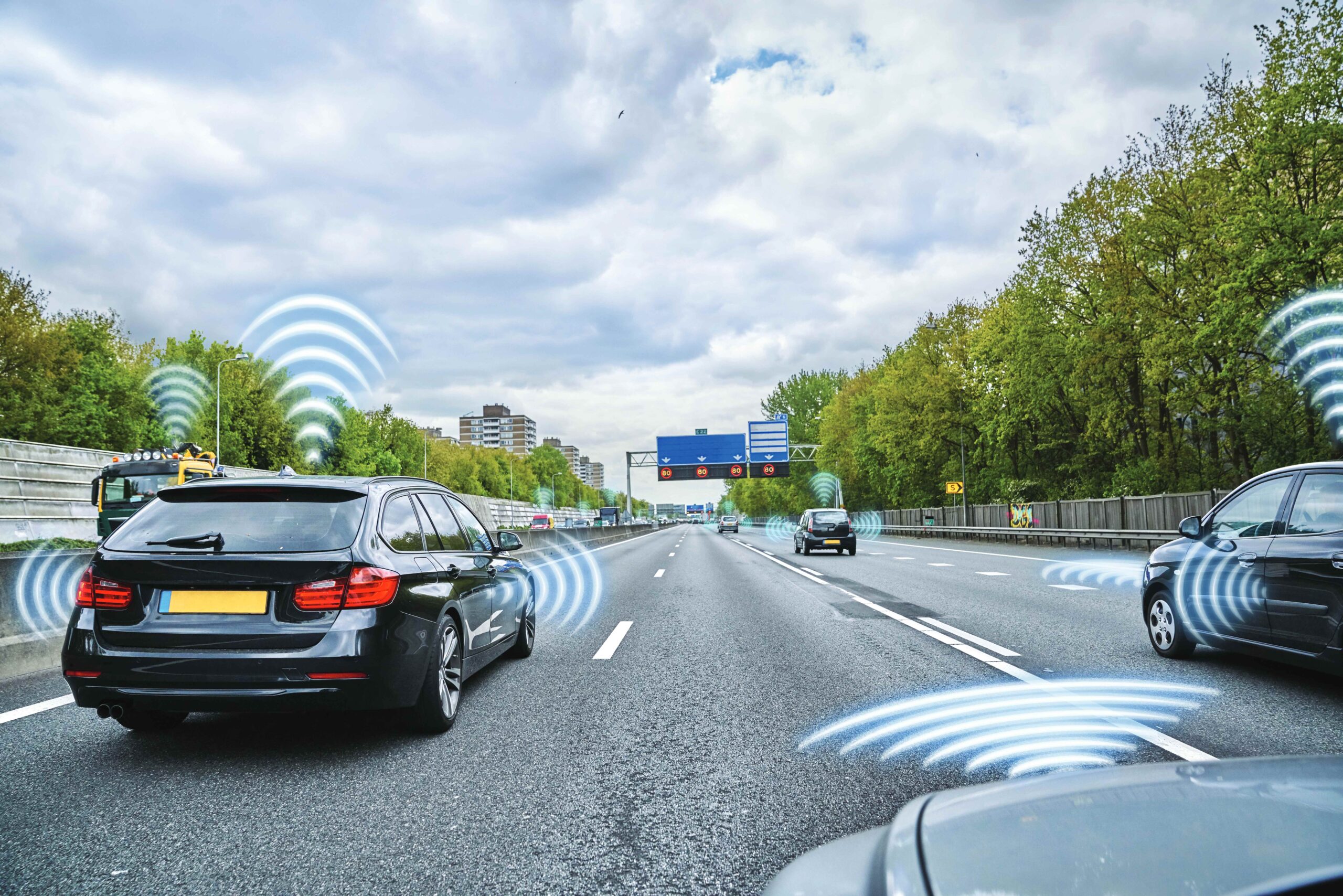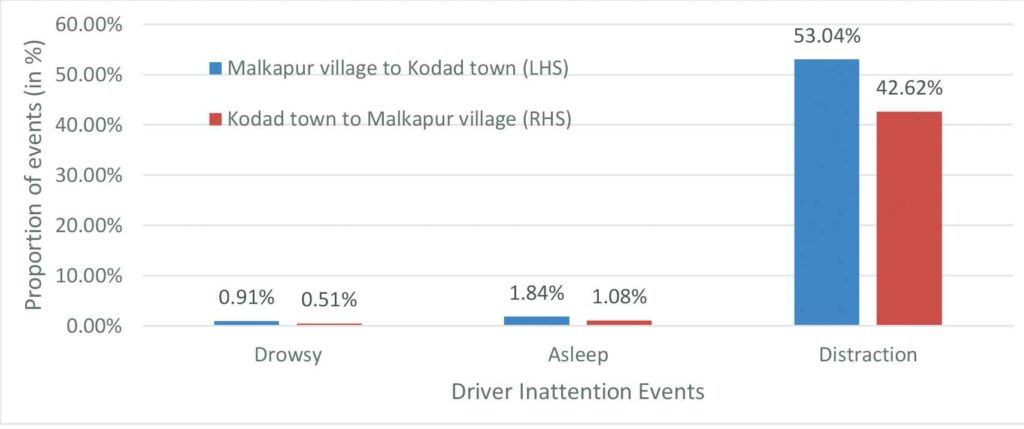
In India’s ambitious pursuit of safer roadways, the integration of Advanced Driver Assistance Systems (ADAS) and Driver Monitoring Systems (DMS) stands as a transformative approach to mitigate road accidents and enhance overall traffic safety. The prevalence of road crashes attributed to human error, including driver inattention and lapses in alertness, underscores the critical need for technological interventions that can pre-emptively address these challenges. Dr. Ch. Ravi Sekhar, Chief Scientist & Head TPE Division, Dr. Mukti Advani, Sr. Principal Scientist, Dr. S. Velmurugan, Chief Scientist & Head TES Division and Dr. M. Parida, Director – CSIR-CRRI along with Dev Singh Thakur, Deep Tech Engineer, iHUB Data, IIIT Hyderabad explore the pivotal role of ADAS and DMS technologies in India’s road safety.

From alerting drivers to potential hazards to actively applying brakes when necessary, ADAS is redefining the landscape of road safety. Complementing ADAS, DMS technology focuses on monitoring driver attentiveness and behaviour. By employing sophisticated sensors to track head movements, eye gaze, and signs of drowsiness, DMS ensures drivers remain focused and responsive behind the wheel. By harnessing the power of these innovative systems, India aims to cultivate a safer driving environment and reduce road accidents and fatalities.
ADAS when integrated with DMS technologies represents significant advancements in automotive safety and driver assistance. By leveraging sensor technology, cameras, and AI algorithms, these systems contribute to reducing accidents, enhancing driving comfort, and moving towards a future with safer transportation.
The Technology
Advanced Driver Assistance Systems are a suite of technologies designed to enhance vehicle safety by assisting drivers in navigating and operating vehicles more safely. These systems utilize sensors and cameras to monitor the vehicle’s surroundings, providing alerts or interventions during potential hazardous situations. Key features of ADAS include Lane Departure Warning (LDW), Pedestrian Collision Warning (PCW), Forward Collision Warning (FCW), and Headway Monitoring Warning (HMW). These technologies complement driver skills, adding extra layers of safety and convenience to reduce accidents and enhance overall road safety.
Driver Monitoring Systems (DMS) play a vital role in preventing accidents caused by human factors by promoting safer driving behaviours and maintaining driver awareness throughout journeys. DMS technologies monitor driver behaviour and attentiveness using sensors, cameras, and AI algorithms to analyse actions and issue alerts or take corrective actions when necessary. Components and features of DMS include drowsiness alerts, phone usage alerts, distraction alerts, seat belt reminders, and smoke detection. Recent studies have emphasized the prevalence of distracted driving, which significantly impacts crash probability, especially when combined with vehicle errors.
Research has proposed detailed taxonomies categorizing driver inattention, aiding crash data analysis and theoretical understanding. Advanced technologies are crucial for addressing driver inattention, although methodologies to assess driver safety in real-time require further refinement. Project iRASTE (Intelligent solutions for Road Safety through Technology and Engineering) deployed an AI-powered DMS device in a public bus on the Interurban National Highway (NH-65 and NH-44) corridors in Telangana, India. This device generated real-time alerts for various forms of inattention, including distraction, drowsiness, and falling asleep, contributing to ongoing efforts to enhance road safety through technological innovation. The implementation demonstrated the feasibility and effectiveness of DMS technology in improving driver safety and mitigating risks associated with driver inattention.

ADAS alerts data and the road network of study corridor (with illustrations)
Impact of ADAS on Road Safety
In Telangana, ADAS-equipped public transit buses on NH-65 generated over 400,000 alerts within the first quarter of 2023. This data, including speed-related information, was gathered for analysis. Researchers utilized this data, along with GPS and Collision Avoidance System (CAS) data, to identify potential safety concerns along the corridor. By analyzing road and traffic parameters, they pinpointed areas prone to safety issues, referred to as “grey spots.” The study involved analyzing repeated bus operations along the corridor and using locational analysis techniques to identify these spots.
To aid this analysis, researchers manually created a detailed road network of the study corridor. This road network was integrated into a GIS database using QGIS and was segmented into 500-meter grids, aligning with factors contributing to road crashes as per Ministry of Road Transport and Highways guidelines. These insights inform road-owning authorities for proactive interventions and validate existing black spot identification methods.
- Statistics of driver inattention events traffic direction-wise(in %)
- Time-segment Distribution of driver inattentiveness (a) Kodad town to malkapur village: K-M (RHS)
Impact of DMS on Road Safety
CSIR-CRRI investigated driver inattention behavior among public transit fleet drivers along NH-65 in Telangana, India, using DMS powered by AI. Ten buses with 36 drivers were equipped with DMS devices along a 150-kilometer test corridor. Data on driver inattention events (drowsiness, sleepiness, distraction) were collected alongside road and land use parameters. The corridor was segmented into 500-meter sections using GIS tools for comprehensive analysis.
A time-based weightage index (TWI) method evaluated the impact of inattention events on road safety, assigning weights based on severity and duration. Statistical analysis, including correlation analysis and modelling, identified factors influencing driver inattention, such as road geometry and land use. The findings of the study offer insights for targeted interventions to mitigate driver inattention, aiding policymakers and transportation authorities in enhancing road safety on highways.
ADAS and DMS pave the way for further advancements in autonomous driving systems, ultimately aiming to achieve accident free roads.
 TrafficInfraTech Magazine Linking People Places & Progress
TrafficInfraTech Magazine Linking People Places & Progress

